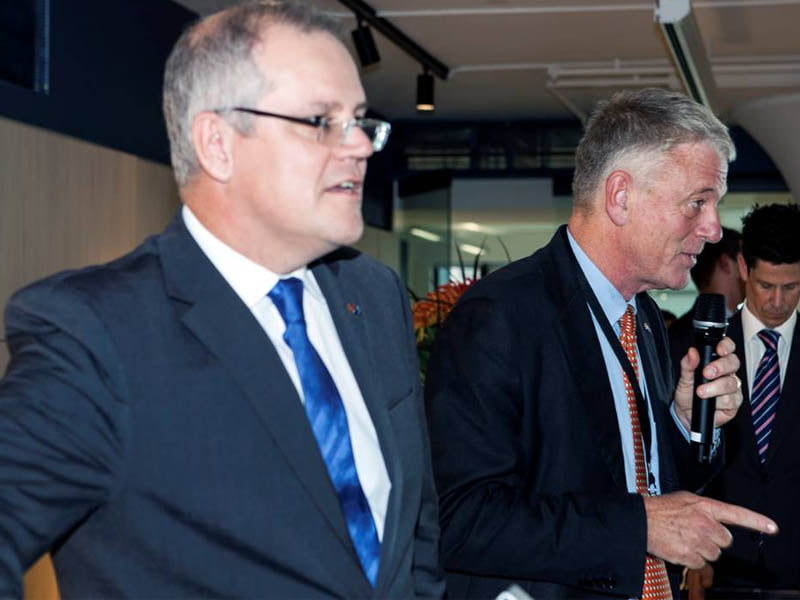It’s not every day that a startup leader in the finance industry argues for a better-resourced regulator to play a bigger role in the sector. On at least two counts that seems counter-intuitive.
But this is the position that Tyro Payments executive director and CEO Jost Stollmann is arguing.
He is talking, of course, about the regulatory sandbox that Treasurer Scott Morrison promised the FinTech sector in his first Budget in May – and then expanded his commitments during the election campaign.

It may be that Mr Stollmann is the Lone Ranger on this one. But he is fundamentally convinced that industry self-regulation of the ‘sandbox’ proposal is not a realistic option, and that it is ultimately not in the longer term interests of the finance sector or the broader economy.
He argues that if Australia truly wants a competitive and de-risked financial sector at the other end of the current FinTech revolution, it needs a super-smart regulator that is at least as innovative as the tech and financial companies it regulates.
Like Scott Morrison, Mr Stollmann believes sophisticated RegTech capability – the regulatory frameworks – is a competitive economic weapon.
To build that capability, he argues a far better-resourced ASIC must establish a regulatory ‘sandbox within the sandbox’. Specifically he is saying ASIC should be given the money and green-light to attract the best and brightest young tech and finance minds in the country. And it should be given licence to work iteratively within the sandbox to build this weapon.
To step back. The sandbox aims to give FinTech’s a contained environment that gives some regulatory breaks so they can test and validate new products and services. It would allow FinTech’s to operate without the ASIC licences normally required of a financial services company, but within constraints.
The current ASIC proposal would cap the activity of each FinTech to a maximum of 100 clients with a maximum exposure of $10,000 each, and a maximum total exposure of $5 million. The ultimate regulator is ASIC, but the industry has been pressing for a self-regulatory regime to ‘manage’ the sandbox.
That is, the industry would ‘manage’ who gets admitted to the sandbox and under what conditions – largely – they would operate. This is where the conflicts of interest start to crowd into the conversation like a room full of elephants.
Mr Stollmann says there are too many dependencies on the established players across the ecosystem. So should the management of ‘sandbox’ be handed over to the established banks? They are after all the proverbial safe pair of hands in the national psyche. Not likely, unless crushing innovation were the aim.
Should it be given over to the big accounting firms? By their own humble admission, these companies employ the biggest brains and best pay-cheques in the country. OMG, no, that’s a terrible thought.
Maybe it could be managed by a FinTech hub that is funded by big banks and accounting firms. Or by an industry association made up of the interests of all of these groups.
The point Mr Stollmann makes is that the key players outside of the industry’s dominant interests have dependencies on those established players.
“The incentive of the established players is to control innovation, or to stifle it,” Mr Stollmann told InnovationAus.com. It is like putting the fox in charge of the hen house, he says (adding helpfully that this does not usually work out.)
“People who have no interest in disruptive innovation cannot be put in charge of the sandbox. They cannot. It has to be the regulator – because the regulator’s interest is to trade off the needs for stability with innovation with public interest [and thereby manage longer term risk],” he said.
This isn’t radical thinking, but it is certainly interesting. Even with his interest in Tyro FinTechHub, Mr Stollmann said the sandbox management belong elsewhere.
And this is where the argument gets tricky.
“The regulator must invest in the new skills of the new world,” he said. “The only way to do this is to have the best and brightest minds inside the regulator, people who are engaged.”
And that means a couple of things. First, investing heavily in acquisition of talent – the best and brightest minds demand significant compensation – and building a work environment that sets them free to create the regulatory environment that Scott Morrison believes can be a competitive weapon for Australia.
That is the ‘sandbox inside the sandbox’. So the framework that was originally announced for the sandbox – the 100 clients, the $10,000 maximum exposure each and the $5 million total exposure – should be a flexible starting point.
“This is just a hypothesis to start the experiment, in my mind. There needs to be the flexibility in the sandbox itself to constantly learn and pivot.”
If every change required a consultation period – the hallmark of the current regulatory approach in finance – then the FinTech revolution as we know it will be over before we have a suitable sandbox in place, he says.
It makes no sense to put taxpayers’ money into a Royal Commission that will tell us again that the big banks’ incentive systems are flawed.
“I would rather take that money and give it to ASIC to do something about it. We have a highly concentrated banking sector, with the dominant players systematically gaming the system to their advantage and stifling innovation.”
“It has to become the DNA in the regulator’s mind that new technology and new ways of thinking actually de-risk the system. And they have to stand up to the pressure from the banks.”
And here comes the last piece of that puzzle. The regulator will need political cover to get it done. It has to be a multi-year committed effort.
That is, significant political will and significant additional funding. And that seems big ask of both the Budget bottom line and the current political climate.
Do you know more? Contact James Riley via Email.

